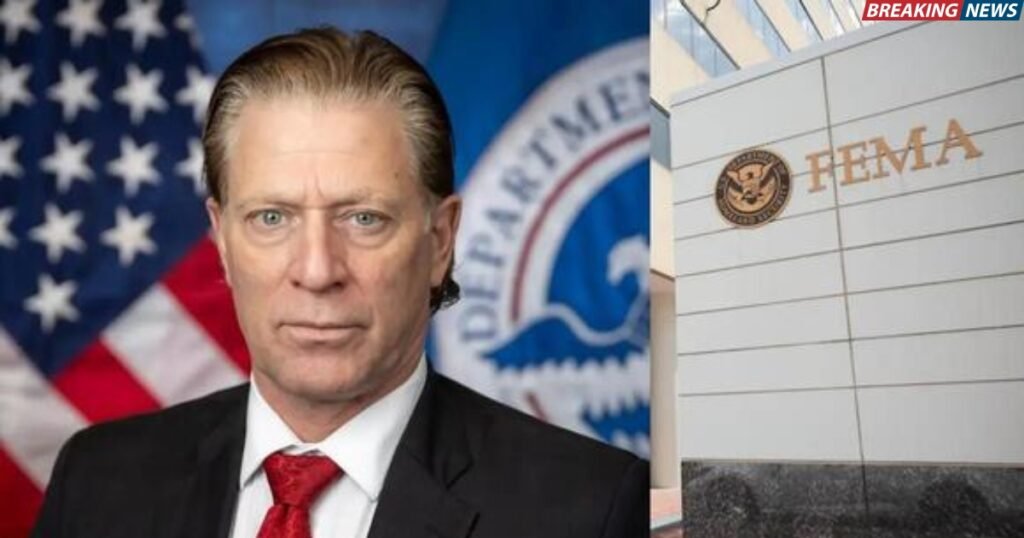
FEMA is facing internal turmoil after its chief reportedly admitted he was unaware that hurricane season had begun. The internal sources confirmed this news. The surprising remark left the staff confused and raised serious concerns about leadership preparedness during a critical time for emergency management. Thus, as storms loom, the agency’s readiness and communication are now under intense scrutiny.
Internal Memos Reveal Disbelief Over Chief’s Statement
Following the shocking remark from the FEMA chief claiming unawareness of the active U.S. hurricane season, the internal communication revealed a wave of disbelief. The concern among the staff is rippling throughout the agency. According to leaked memos and emails reviewed by insiders, senior officials and mid-level managers reacted with a mix of confusion, frustration, and alarm over the statement. Thus, it is considered both inaccurate and damaging to public trust.
Several internal documents show that preparedness briefings for the 2025 hurricane season had already begun weeks prior. This includes regional coordination calls, storm readiness drills, and logistic staging operations. Furthermore, in one memo the day after the chief’s statement, a regional coordinator wrote, “How can we expect our teams to follow federal direction if the leadership doesn’t even know the season started?”
Sources Say Preparedness Plans Were Already Underway
Despite the FEMA chief’s surprising claim of being unaware that hurricane season had begun, many agencies confirmed that preparedness plans were already in motion well before the public comment was made. According to internal documentation and testimony from senior staff, FEMA had initiated standard pre-season protocols as early as April, in line with annual procedures.
Regional branches had started coordinating with state emergency management offices, scheduling drills, and updating response frameworks. They also ensured that key supply caches, such as food, water, and medical kits, were strategically positioned in high-risk zones. Furthermore, one senior logistics officer stated, “We had already staged assets in at least four coastal states before June even began.”
Sources also noted that FEMA’s National Response Coordination Center (NRCC) had elevated its readiness level. Next, the storm monitoring teams were actively tracking early disturbances forming in the Atlantic. The agency’s internal calendar included multiple storm-readiness webinars, scenario planning workshops, and hurricane awareness training for field staff. These all suggest that, operationally, FEMA was far from unprepared.
What shocked many inside the agency was the apparent disconnect between the chief’s public statement and the ongoing behind-the-scenes activity. As one official put it, “Either he misspoke, or he hasn’t been looped into our weekly briefings. Either way, it’s deeply troubling.”
Experts Question FEMA Leadership and Crisis Awareness
The FEMA chief’s reported statement on unawareness of the U.S. hurricane season has sparked criticism from emergency management experts. They are now questioning the agency’s leadership and situational awareness during a critical time. For many professionals in the disaster preparedness field, the remark is more than a simple misstep. They claim it to be a troubling indicator of a potential leadership gap at the highest level of federal emergency response.
Dr. Carla Jennings, a former FEMA advisor and professor of emergency management, remarked, “For a FEMA administrator to be unaware of the start of hurricane season raises red flags. It shows a failure to engage in even the most basic preparedness briefings.”
- Standard Knowledge for FEMA Heads: Hurricane season begins every year on June 1. Analysts stress this should be embedded knowledge for FEMA leadership, especially during an active climate year.
- Tone Set from the Top: Emergency consultant Mark Ellis emphasized that strong leadership is essential: “If the tone is off at the top, the entire operation suffers.”
- Missed Forecast Signals: Meteorologists warned of an intense hurricane season weeks in advance. Furthermore, experts question whether top leadership was briefed properly or not.
- Breakdown in Briefings: The incident may reflect gaps in how operational updates are conveyed to senior leaders. Thus raising concerns about internal FEMA workflows.
- Impact on Field Operations: A visible leadership lapse could lower morale among field teams who rely on clear direction and support from Washington.
- Congressional Oversight Demanded: Some lawmakers and watchdog groups are calling for hearings or audits into FEMA’s readiness and executive communication structures.
- Reputation Damage Risks: Analysts warn that public perception of FEMA’s reliability could erode, especially if leadership appears disconnected during peak disaster periods.
Hurricane Season Officially Began Weeks Ago
The Atlantic hurricane season officially began on June 1, as it does every year. From this time onward, the m, the most critical periods for emergency preparedness in the United States. Despite this well-known annual timeline, recent remarks by the FEMA chief have confused both the agency and external experts. On the contrary, multiple layers of storm preparedness were already activated weeks earlier by both federal and state emergency systems.
- June 1 Marks the Official Start: The Atlantic hurricane season starts from June 1 to November 30. It is an established calendar that FEMA and other agencies use for planning and operations.
- NOAA Issued Early Forecasts: In May 2025, the National Oceanic and Atmospheric Administration (NOAA) predicted an above-average season with 17 to 22 named storms expected. Thus alerting agencies and the public to prepare early.
- Preparedness Campaigns Were Active: FEMA launched education efforts like Hurricane Preparedness Week in late May. It includes toolkits, safety infographics, and evacuation planning tips.
- State-Federal Coordination Had Begun: FEMA regional offices were actively working with coastal states. They conducted joint planning sessions and updated emergency response protocols.
- Supplies and Resources Were Deployed: Essential supplies such as water, tarps, generators, and MERs (meals ready to eat) had already been pre-positioned in high-risk zones.
- Annual Budgeting is Tied to the Season: Federal funding allocations and staffing schedules are based on the hurricane calendar. Thus making awareness of the start date operationally vital.
FEMA Yet to Issue Clarification on Chief’s Statement
Despite the growing backlash over the FEMA chief’s remark about being unaware of the hurricane season’s start, the agency has not released any official clarification. The absence of a formal response only deepened confusion within the agency and among the public. Thus raising concerns about transparency, leadership accountability, and crisis communication during a critical time.
- No Official Statement Release: As of now, FEMA has not publicly addressed or corrected the chief’s statement despite widespread media coverage and internal concerns.
- Internal Staff Left in the Dark: Sources say agency employees have not received internal guidance or talking points to explain or clarify the chief’s comment.
- Public Perception of Confusion: The silence from FEMA’s leadership has fueled perceptions of disorganization and a lack of urgency in the face of growing storm threats.
- Increased Media Pressure: News outlets continue to request statements or interviews, but the agency has remained quiet, offering no new details on the chief’s position.
Conclusion
FEMA’s silence following the chief’s controversial statement has intensified scrutiny and raised doubts about leadership readiness. As hurricane threats grow, timely communication, accountability, and public trust are more vital than ever. Thus, the agency must respond quickly to restore confidence and ensure the nation is prepared for the peak storm season ahead.



